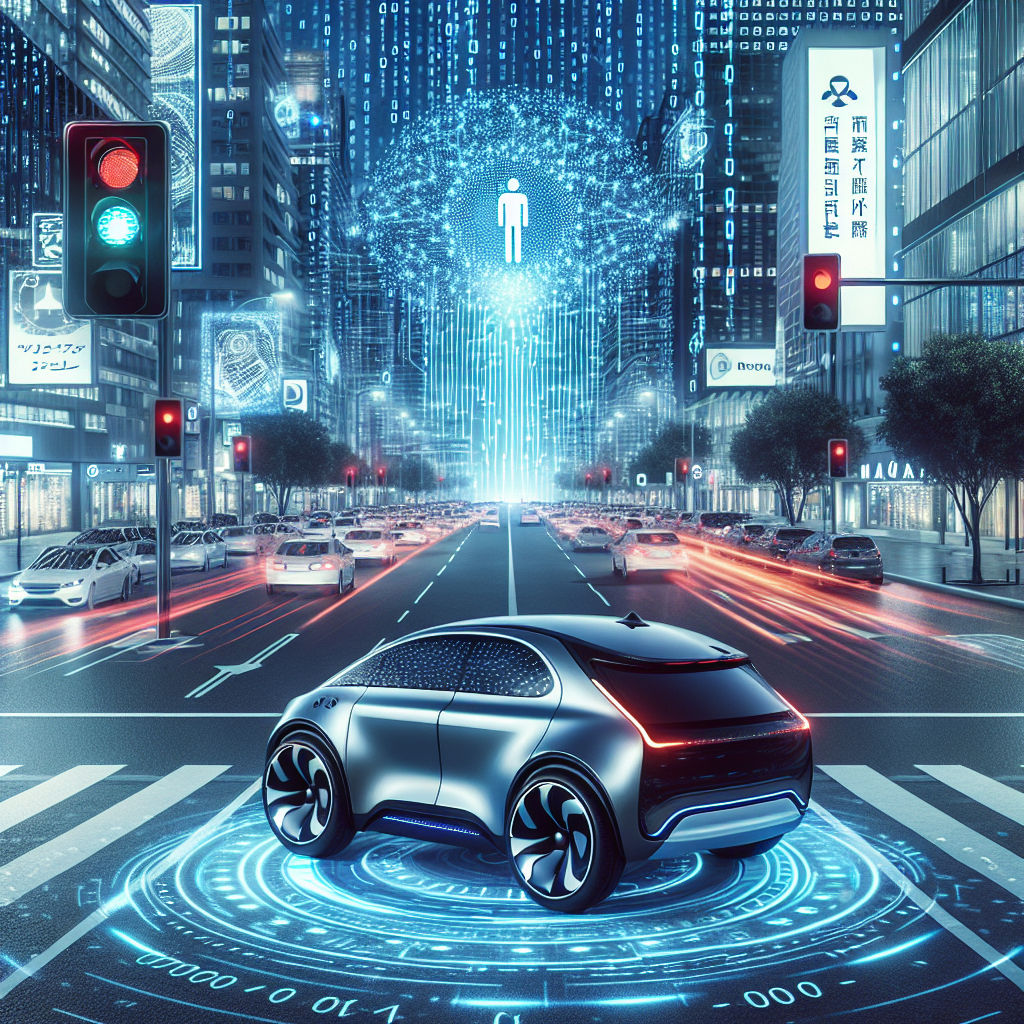Generative AI: A Key Player in Autonomous Vehicles
Artificial intelligence (AI) is revolutionizing the way we live, work, and travel. One of the most exciting applications of AI is in the field of autonomous vehicles. These vehicles have the potential to transform transportation by improving safety, efficiency, and convenience. At the heart of autonomous vehicles is generative AI, a powerful technology that enables these vehicles to perceive and interact with their surroundings in real-time.
What is Generative AI?
Generative AI is a subset of artificial intelligence that focuses on creating new data based on patterns and examples from existing data. This technology is capable of generating realistic images, videos, and even text that mimic the patterns and structures of the original data. Generative AI is based on deep learning, a branch of AI that uses neural networks to simulate the human brain’s ability to learn and adapt.
In the context of autonomous vehicles, generative AI plays a crucial role in perception, decision-making, and control. By analyzing sensor data and generating predictions about the environment, generative AI enables autonomous vehicles to navigate safely and efficiently. This technology is constantly learning and evolving, making it ideal for dynamic and complex environments like roads and highways.
How Does Generative AI Work in Autonomous Vehicles?
Generative AI in autonomous vehicles works by processing sensor data from cameras, lidar, radar, and other sources to create a detailed understanding of the vehicle’s surroundings. This data is then used to generate predictions about the environment, including the location of other vehicles, pedestrians, and obstacles. Generative AI can also simulate different scenarios and predict how the vehicle should respond in each situation.
One of the key advantages of generative AI in autonomous vehicles is its ability to handle uncertainty and variability. By generating multiple possible outcomes and selecting the most likely one, generative AI can make informed decisions in real-time. This technology is also able to adapt to changing conditions, such as weather, traffic, and road construction, making it highly versatile and robust.
Generative AI is also used in autonomous vehicles for path planning and control. By generating optimal trajectories and commands for steering, acceleration, and braking, generative AI enables autonomous vehicles to navigate complex environments with precision and efficiency. This technology can also predict the behavior of other road users and adjust its own actions accordingly, ensuring safe and smooth interactions on the road.
Benefits of Generative AI in Autonomous Vehicles
Generative AI offers several key benefits for autonomous vehicles, including:
1. Improved Safety: Generative AI enables autonomous vehicles to perceive and respond to their surroundings with greater accuracy and speed, reducing the risk of accidents and collisions.
2. Enhanced Efficiency: Generative AI can optimize path planning and control, leading to smoother and more efficient driving patterns that save time and energy.
3. Adaptive Learning: Generative AI is constantly learning and evolving, allowing autonomous vehicles to adapt to new situations and challenges in real-time.
4. Scalability: Generative AI can be deployed across a fleet of autonomous vehicles, enabling them to communicate and coordinate with each other for improved performance and safety.
FAQs
Q: How does generative AI differ from other types of AI in autonomous vehicles?
A: Generative AI focuses on creating new data based on existing patterns, while other types of AI, such as machine learning and reinforcement learning, focus on analyzing and optimizing existing data. Generative AI is particularly well-suited for handling uncertainty and variability in dynamic environments like roads and highways.
Q: Can generative AI be used in conjunction with other technologies in autonomous vehicles?
A: Yes, generative AI can be combined with other technologies, such as sensor fusion, object detection, and semantic segmentation, to enhance the capabilities of autonomous vehicles. By integrating generative AI with these technologies, autonomous vehicles can achieve a higher level of perception, decision-making, and control.
Q: What are the challenges of implementing generative AI in autonomous vehicles?
A: One of the main challenges of implementing generative AI in autonomous vehicles is the need for large amounts of high-quality training data. Generative AI relies on examples and patterns from existing data to create new data, so having a diverse and representative dataset is essential for optimal performance. Additionally, generative AI algorithms can be computationally intensive and require powerful hardware for real-time processing.
Q: How can generative AI improve the user experience in autonomous vehicles?
A: Generative AI can enhance the user experience in autonomous vehicles by providing personalized and context-aware services, such as voice recognition, natural language processing, and predictive analytics. By understanding the preferences and behaviors of passengers, generative AI can create a more comfortable and enjoyable driving experience for users.
In conclusion, generative AI is a key player in the development of autonomous vehicles, enabling them to perceive, interact, and navigate in complex environments with precision and efficiency. This technology offers several benefits, including improved safety, enhanced efficiency, adaptive learning, and scalability. By harnessing the power of generative AI, autonomous vehicles have the potential to revolutionize transportation and make our roads safer and more sustainable for everyone.

